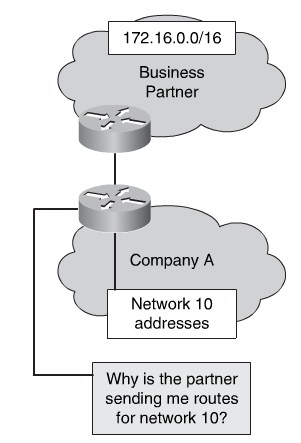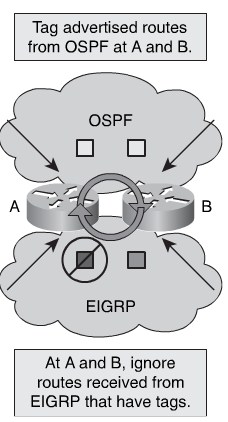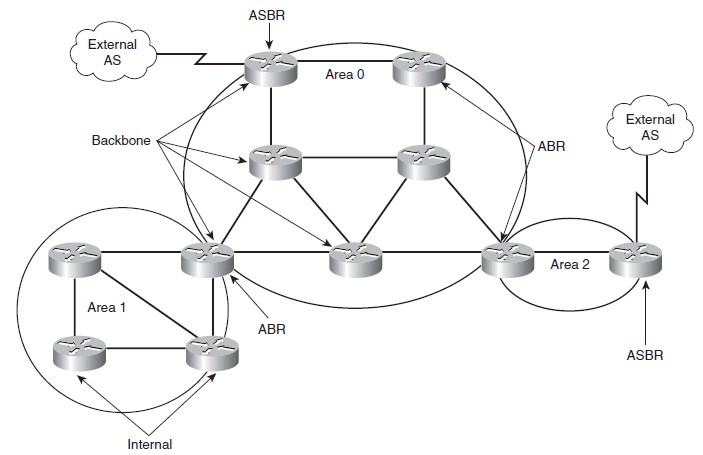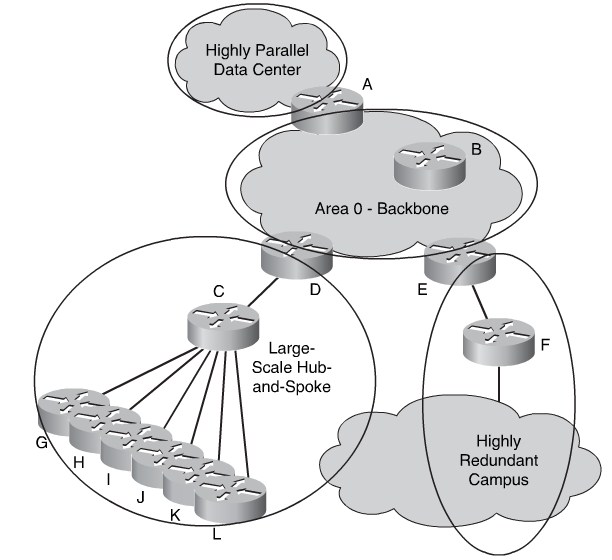Difference between revisions of "Developing an optimum Design for Layer 3"
m (→Defensive filtering) |
m (→Designing Areas) |
||
| Line 49: | Line 49: | ||
*Make nonbackbone areas stub or totally stubby areas | *Make nonbackbone areas stub or totally stubby areas | ||
*Make it summarized | *Make it summarized | ||
| + | {| | ||
| + | |[[Image:ScreenShot307.jpg|800px|left|thumb|Area Summarization]] | ||
| + | |} | ||
| + | |||
==OSPF Hierachy== | ==OSPF Hierachy== | ||
[[Image:ScreenShot302.jpg]] | [[Image:ScreenShot302.jpg]] | ||
Revision as of 15:14, 2 September 2010
Kapitel 3 fra CCDP ARCH bogen.
Contents
At designe avancerede IP adresserings løsninger
NAT
Content Load-Balancing Device
En enhed der fordeler belastningen mellem flere Servere. For eksempel en enhed der fordeler forespørgsler fra WEB-brugere mellem ti identiske WEB-servere. Det kan være baseret på forskellige faktorer
- Antallet af forbindelser til hver server
- CPU belastning på Serverne
- En kombination af flere faktorer der beskriver servernes belastning
For eksempel Cisco CSS 11500 Series Content Services Switch
Designing avanceret Routning
Inappropriate Transit Traffic
Defensive filtering
Route redistribution
Migrating Between Routing Protocols
Two companies have been merged. Company A are running EIGRP and Company B are running OSPF.
Step 1: Redistribute between A & B
Step 2: Enable OSPF in comapny A, and make sure it has the highest Administrativ Distance
Step 3: When OSPF is running and is fully converged, Remove EIGRP
Route Summarization og Default Routing
Designing Scalable OSPF Design
OSPF Scalability best practise
- Any one Router should have no more than 60 adjacent neighbors
- An area should have no more than 50 Routers
- Any one Router should not be in mothe than three areas
- Already heavily loaded Routers should not be DR and BDR
Designing Areas
Network topology and addressing should be designed initially with division of areas in mind.
General advice about OSPF design is:
- Minimize the routing information advertised into and out of the area.
- Experience shows that you should be conservative about adding routers to the backbone area.
- Make it simple
- Make nonbackbone areas stub or totally stubby areas
- Make it summarized
OSPF Hierachy
Yada yada OMG OSPF
If hello timers are set to 1/3 second for 300 interfaces, each with 10 neighbors, the router would have to generate 900 hellos per second.
When the 3000 neighbors send 3 hellos per second back to the router, it has to process a
total of 9900 hellos per second.
Det er jo ikke realistisk, Cisco tag dig sammen
 This article is under development....
This article is under development....



